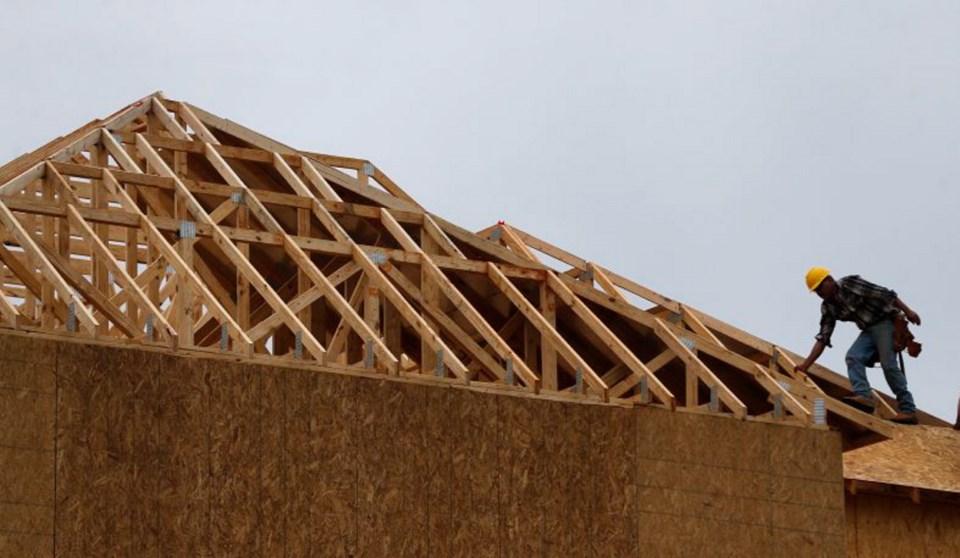Historically low interest rates and an increase in population will spur Greater Victoria’s homebuilding activity to a 50 per cent increase this year, according to Canada Mortgage and Housing Corp.
In its fall market forecast, the federal agency predicts as many as 1,950 total housing starts this year, up from the1,315 recorded in 2014. The level of activity is expected to maintain its pace in 2016 with a forecast of 1,900 new starts and 1,875 in 2017.
While the bulk of those starts will be multi-family units such as apartments and condominiums, single-family home construction will increase to 625 this year before dropping slightly to 600 in 2016 and 575 in 2017.
“Demand for new homes in the Victoria area will be supported through the forecast horizon by modest employment and population growth combined with low mortgage interest rates,” said CMHC senior market analyst Eric Bond. “Following a year of more moderate construction activity in 2014, housing starts are expected to increase in order to meet demand from new and existing residents.”
Casey Edge, executive director of the Victoria Residential Builders Association, said the CMHC report looks to be on the money, though he did question whether or not the spectre of rising interest rates some time next year would slow down homebuilding.
“The challenge with that is it depends on whether you are of the view if higher interest rates are coming or not,” Edge said. “Some economists believe demographics are driving low interest rates, with baby boomers heading into retirement and becoming savers and not spenders partially and significantly responsible keeping rates historically low.”
Edge said he liked the suggestion the Victoria market was heading into a period of stability, and said it should be seen as good news that CMHC predicts housing starts will hover around the 2,000-level over the next two years.
The CMHC outlook also notes sales of existing homes will increase 16 per cent to 1,400 transactions in 2015 and about 7,000 in both 2016 and 2017.
The average sale price will follow suit, increasing 3.8 per cent to $515,500 this year, with increases of 3.7 per cent and 2.3 per cent in 2016 and 2017.
“Higher sales levels combined with a declining supply of listings moved the Victoria area resale market into sellers’ conditions through the first eight months of 2015,” CMHC noted in its outlook. “The tighter resale market has put upward pressure on the average home price.”
According to CMHC, the higher prices will encourage new listings and bring new housing starts online, which in turn will bring the market back into balance.
Victoria Real Estate Board president Guy Crozier said the seller’s market shows no sign of stopping this year, noting that, with a week left in the month, October is already shaping up to be a significant improvement over the same month in 2014.
“We have seen 28 months in a row that we’ve had monthly sales increase over the year before,” Crozier said. He noted October should have more than 700 sales this year compared with 600 in the same period last year.
“It’s taking a toll on inventory. The only places that are able to sustain what we would call a healthy inventory are areas like the West Shore where there is a supply of land. But what’s happening in the core areas, where is there is no developable land, is this continued increase of sales and depleting inventory, which is putting pressure on prices.”
Crozier said there is no reason to think that won’t continue again next year.
CMHC’s outlook also predicts the rental apartment vacancy rate will drop as the demand for housing increases.
The rate is expected to drop to 1.4 per cent this year, from 1.5 in 2014, while in 2016 it will drop further to one per cent.
As new rental buildings are completed in 2017, however, the rate is expected to improve.
“The Victoria region is presently experiencing the highest level of rental construction activity since the early 1990s,” CMHC noted. “Market demand, low financing costs and favourable development policies are supporting the construction of an expanded and updated rental stock.”
The growth may be tempered starting in 2016, as CMHC expects there will be a gradual increase in mortgage rates.



